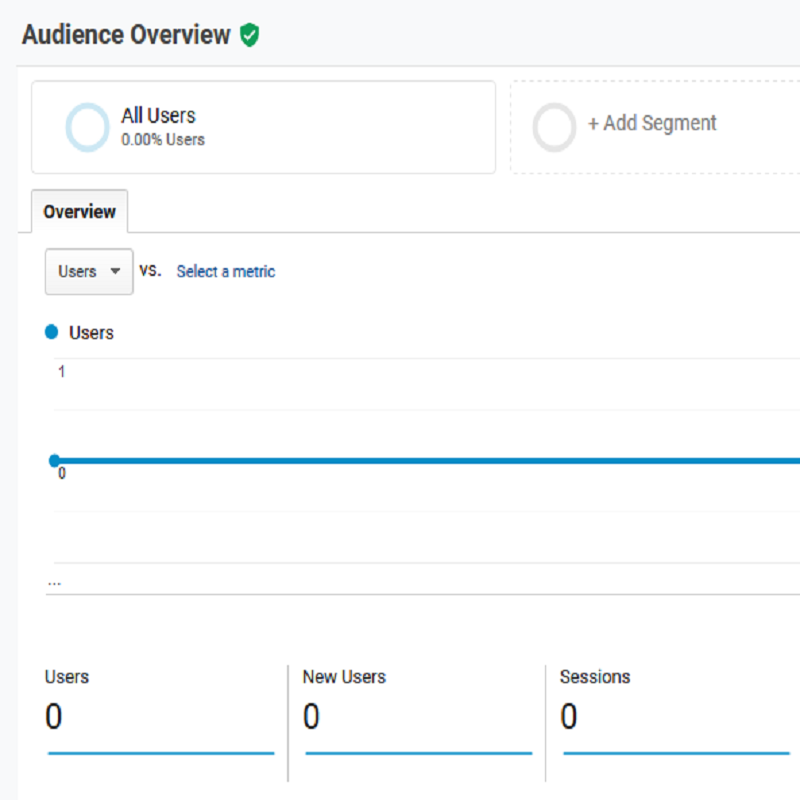So you’ve spent a ton of time and money building a new website. You launch, a couple days pass and you head to Google Analytics expecting to see hundreds, maybe even thousands, of hits. What you see when you log in is not what you expected; instead, there has been virtually no traffic to your website. Crickets. Tumbleweeds. What happened? Is it you? Is it them? Is it both? Read on to discover what the problem could be, and how you can fix it.
Why is no one visiting your website?
Your website isn’t accurately tracking data
First things first, is Google Analytics installed correctly or even installed at all? In order for Google Analytics to accurately report data, it must be installed on every page of your website (generally in the header). Google Chrome offers a Tag Assistant extension that can help you determine if Analytics is properly installed.
Your website isn’t being found by search engines
In order to include your website in search results, search engines must “crawl” and “index” pages. It’s possible that Google (or other search engines) aren’t finding your website in order to do this. If your website is brand new, the search engines may just not have gotten around to crawling your website yet. If you’re established and they still haven’t crawled your website, it’s possible that you are blocking your site, or parts of it, from search engines through the robots.txt file or with a misplaced piece of code. Taking a look at Google Search Console can give you insight into what pages Google is finding, and which ones they aren’t.
Your website isn’t being found by visitors organically
Even if search engines crawl and index your website, they have to deem it relevant and valuable in order to display it in search results. When you launched your website, did you ensure foundational SEO best practices were in place? Have things like title tags, a robots.txt file, a sitemap, meta descriptions, and proper URL structure been added or done? If not, you most likely did not set up your website for organic success. All of these elements (and many more!) should be built into all new websites, and the fun doesn’t stop there. SEO should be at the forefront of your ongoing digital strategy. Consistently revising and adding new copy to your website, performing keyword research, and building links will ensure organic traffic continues to increase over time.
Your website is providing no value
Are you providing information that people actually care about? If no one is searching for the topics you cover or the keywords you’ve optimized for, it’s likely your website traffic will be extremely low.
Take a look at your content. Is it valuable? Is it clearly written? Is it informative and not just a bunch of “fluff?” Are you providing information about your business as well as other types of content (informational blog posts, videos, helpful tips, etc.)? Are photos large and attention-grabbing? Each and every page of your website should serve a purpose, and provide value to a user.
Your website takes forever to load
We all know how annoying it is to go to a super slow website. In many cases, users will click out of a website before it loads if it takes even a couple of seconds. Analytics won’t track or report the user as a visit, and if that person was a potential customer, you’ve likely lost them forever.
Your website isn’t being promoted
You can’t just launch a website and expect users to flock to it. You need to let the world know it exists. Shout it from the mountain top! On every mountain possible! Promote your website via email and social media platforms, on your business cards, and with any offline advertising efforts. We also love using strategic paid search to help potential customers find a newly-launched website. The more you promote your website, the more people will visit it. It’s truly as simple as that!
How to increase web traffic
- Write for users AND search engines. Create valuable copy and conduct keyword research to ensure you are writing about things that people actually care about.
- Make sure your website is designed in a user-friendly way. Don’t skimp on the technical elements that help your website to load quickly.
- Ensure all SEO best practices are in place and submit your website to search engines, encouraging them to crawl and index it.
- Never stop promoting your website or new content. Send emails, use social media, and continuously invest in SEO and paid search.
- Work with a professional, like Rosenberg Advertising, and don’t worry about any of this! It’s our job to ensure our client’s websites are technically sound, user-friendly, and generating the most traffic possible.




